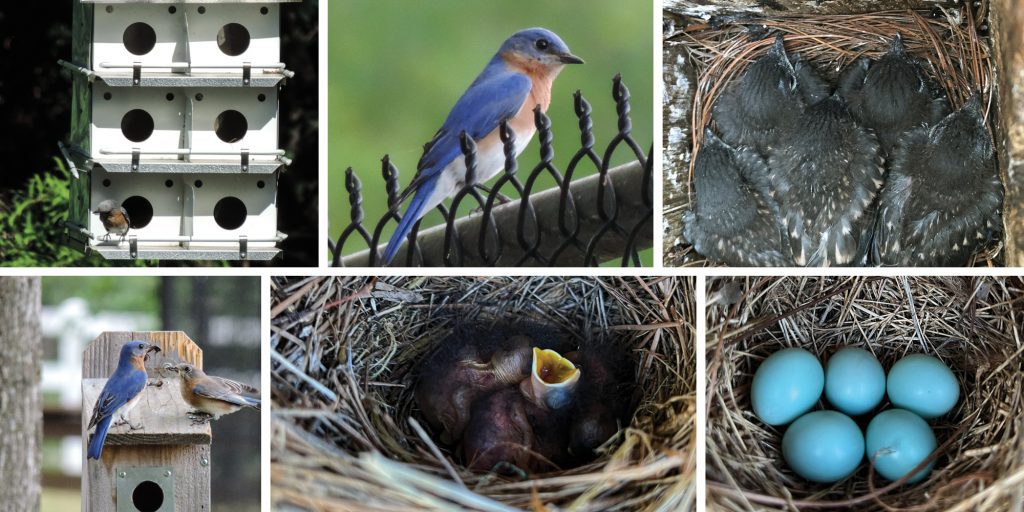Cultivating Colorful Companions
 Birdwatching has long been a favorite pastime for many nature-loving Butterfield residents, offering a peaceful and rewarding way to connect with the community’s verdant surrounding environment. Several highly engaged BTV residents serve as volunteers to support birds and wildlife on the campus – which happens to carry an official designation as a bird sanctuary and a certified wildlife habitat as defined by the National
Birdwatching has long been a favorite pastime for many nature-loving Butterfield residents, offering a peaceful and rewarding way to connect with the community’s verdant surrounding environment. Several highly engaged BTV residents serve as volunteers to support birds and wildlife on the campus – which happens to carry an official designation as a bird sanctuary and a certified wildlife habitat as defined by the National
Wildlife Federation.
For years, BTV retirees have custom-built bird boxes and houses, installed and maintained countless feeders, raised funds to purchase a steady stream of food and actively kept tabs on the senior community’s bird count. And, while the volunteers enjoy observing all kinds of birds, the dozens of bluebird families with their vibrant colors, warbling songs and interesting nesting habits are what seem to inspire the greatest
degree of fascination.
A few years ago, Judy Doyle, a former science teacher and BTV resident for over two decades organized a group of volunteers to specifically focus on nurturing a healthy population of bluebirds. “They offer such a sense of peace,” she said. “They are so interesting – their characteristics and colors – how they react to things. Nature has always been my life, and I love observing and taking care of these birds.” Judy is quick to credit others who have invested their time and talents, such as talented woodworker Richard Wharry, who has handmade and repaired dozens of quality birdhouses designed to allow for ease of periodic cleaning and maintenance.
Retired educator Barbara Brannan puts her teaching background to great use, frequently compiling beautiful photos and interesting information about Butterfield’s bird populations on a public bulletin board. Fascinated by the annual bluebird activity, Barbara and others carefully track which of 26 birdhouses have nesting couples, the number of eggs laid in each box and how many babies survive to be fledglings. “Bluebirds are year-round residents of Arkansas, and some of our boxes see as many as three generations of babies between March and August,” she said. The volunteers keep tabs on when eggs are laid and can estimate when they will hatch. “Bluebird eggs typically incubate for 12 to 14 days, and then it’s between 17 to 21 days for a new hatchling to mature enough to fledge. Temperature plays a role in the timeline.” Barbara keeps a close eye on the calendar and tries to capture and share photos of each life stage.
Another detail-oriented resident, Roy Penney, compiles and shares a report using data from all the resident volunteers who observe and record the bluebird nesting activity. After a couple of disappointing years of significantly fewer eggs and surviving babies in 2021 and 2022 – perhaps related to predators – the tide turned toward a bluebird population boom in 2023. Out of 78 eggs laid, 52 hatched and all the babies survived to become fledglings. 2024 is trending to be a great year, as well.
Beyond the intrinsic entertainment value associated with watching bluebird families thrive, a solid population plays a crucial role in helping to naturally control insect populations. And, because bluebirds are particularly sensitive to environmental toxins, an abundant population signals that the surrounding environment is well-maintained and ecologically viable.

Benefits of Birdwatching
 Engaging in bird identification and learning about the habits of different species provides positive mental stimulation. Those who enjoy keeping records of sightings and nesting trends or learning the distinct calls of birds cultivate cognitive engagement to help keep the mind sharp.
Engaging in bird identification and learning about the habits of different species provides positive mental stimulation. Those who enjoy keeping records of sightings and nesting trends or learning the distinct calls of birds cultivate cognitive engagement to help keep the mind sharp. - Birdwatching encourages walking, which improves mobility through light exercise and combats a more sedentary lifestyle.
- Social engagement can be a positive outcome from birdwatching. Sharing the excitement of spotting birds or discussing ways to attract and support nesting pairs helps foster feelings
of community. - Spending time surrounded by the sights and sounds of nature can reduce stress, improve mood, and enhance overall well-being.
- Studying birds and supporting healthy habitats provides a sense of purpose for many. Nurturing and protecting birds can be fulfilling at any age.
